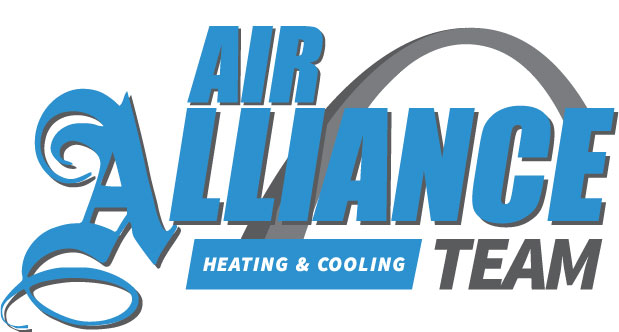
If you’re uncertain whether your Ballwin and St. Charles residence has bad indoor air quality (IAQ), it probably does.
We are indoors a lot. In fact, we’re inside up to 90% of the time, according to the U.S. Environmental Protection Agency. And the air inside residences could be 2–5 times worse than outdoors, which could create long-term health concerns.
Most Common Sources of Poor IAQ
We’ve made a list of the most ordinary sources of bad IAQ, the issues they cause and how you can take care of these indoor air pollutants. If you’re troubled by the air inside your house, we suggest consulting with a professional like Air Alliance Team about which options are best for your house.
Volatile Organic Compounds
Volatile organic compounds, or VOCs, are vapors released by everyday household products.
They’re found in paint and stains in addition to:
- Furniture
- Carpet
- Building materials
- Cleaning products
- Cosmetics
- Air fresheners
- Candles
When these vapors accumulate in your home, they may irritate your eyes, nose and throat. They can also cause headaches and nausea. Regardless of whether your home is in a rural or industrial space, an EPA study found indoor levels of these fumes can be 2–5 times greater than the air outside your home.
Always adhere to the manufacturer’s instructions when painting or cleaning. Opening a window can help chemicals dissipate faster.
Air purification systems can also better your air. This unit partners with your heating and cooling unit to freshen indoor air. When looking for a system, ensure it’s specifically designed to eradicate VOCs.
Dust and Pet Dander
Dust and pet dander can trigger health problems like asthma and allergies, especially when it constantly gets recirculated by your house’s comfort unit. While you can vacuum more frequently and install an improved air filter, an air filtration system may be a better solution.
This equipment hooks to your comfort equipment to provide strong filtration. Some types have hospital-level filtration for eliminating particles and bioaerosols.
Persistent Odors
Newer houses are tightly sealed to boost energy efficiency. While this is good for your utility bill, it’s not very good for your IAQ.
Stuffy odors can stick around for a greater amount of time as your home is pulling in a smaller amount of fresh air. As keeping your windows open all the time isn’t doable, here are two ways you can make your indoor air smell cleaner.
An air purification system is put in your ductwork to wipe out odors before they get released again. Find one with a carbon filter and the power to eliminate dangerous VOCs. These units can also help keep your loved ones healthy by eliminating most bacteria and common allergy triggers like pollen and mold spores.
A ventilation system removes musty indoor air and replaces it with clean outdoor air. There are two kinds of equipment (heat recovery and energy recovery), so check with our professionals for more info on which solution is best for your house.
Unbalanced Humidity
It’s important your house’s humidity keeps even. Air that has too much moisture can cause mold, while dry air can create respiratory symptoms.
Our professionals suggest 40–50% for top comfort. To keep yours in balance, consider getting a whole-home humidifier or whole-home dehumidifier with your comfort unit.
Instead of having to drag a humidifier from room to room, this product delivers consistent humidity throughout your house.
Carbon Monoxide
Carbon monoxide is colorless gas you can’t smell. It’s a byproduct of insufficient combustion in fuel-burning appliances, like gas heating systems, water heaters or fireplaces.
It presents an extreme health risk. In little levels, it can cause flu-like sickness like headaches and nausea. It may be deadly in heavy levels.
We advise yearly furnace maintenance to double-check your system is operating properly. This work allows our technicians to spot troubles before they begin, including malfunctions that can create carbon monoxide leaks.
The best method to keep your residence free of carbon monoxide is to install detectors. These alarms must be on each floor close to bedrooms and living areas.
Improve Your House’s Air Quality with the Air Alliance Team Professionals
Informed that your home has bad air quality but not sure how to enhance it? Or unsure which option is right for you? Give our friendly HVAC professionals a call at 636-206-4584 or contact us online right away. With free estimates and expert service, we’ll help you find the right equipment for your home and budget.
